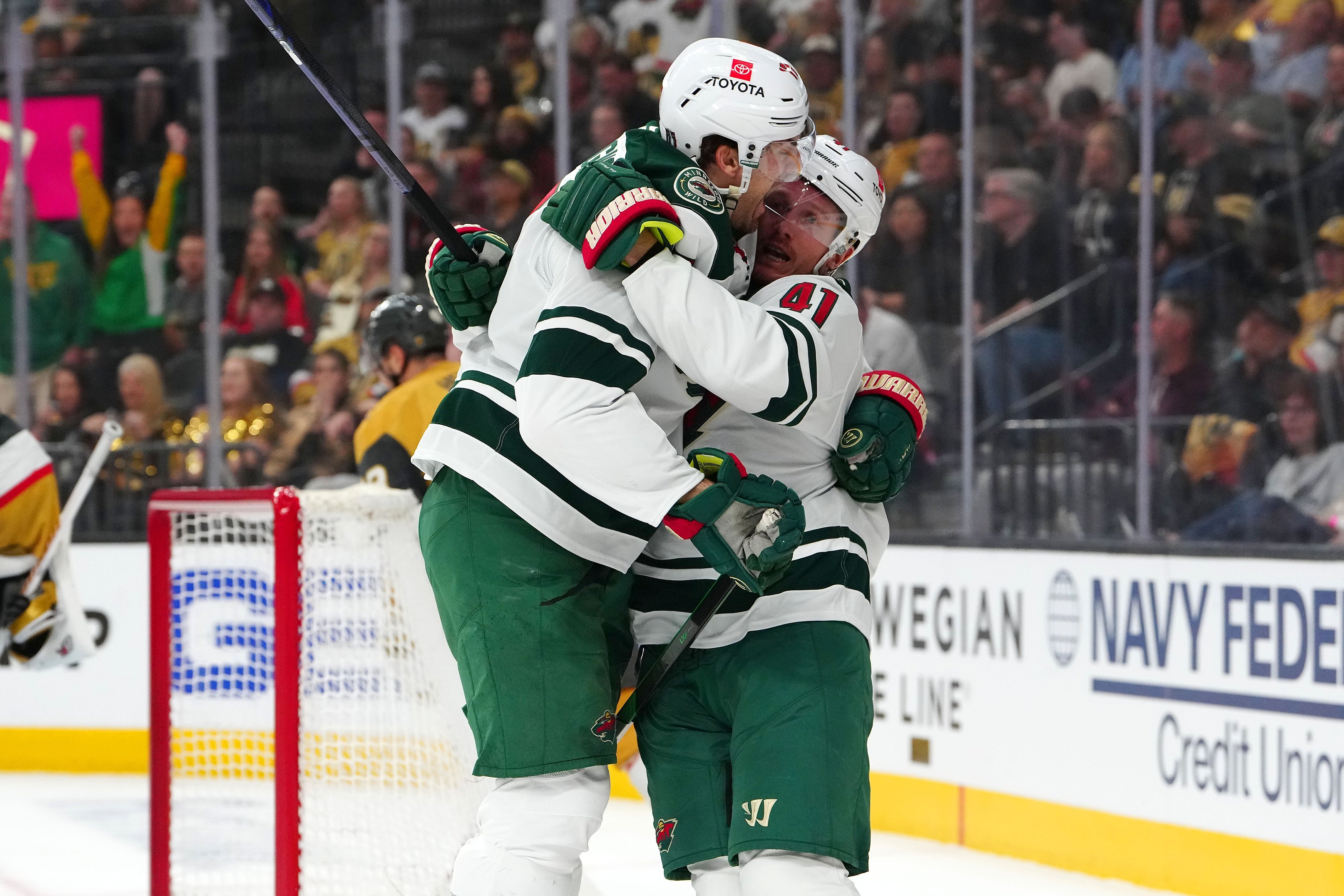
Talk to anybody on the street and ask them this question: Do you form your opinions based on facts and logic, or based on other factors? The vast majority will proudly puff out their chests and inform you that they are one of the reasoned logicians of this era.
And yet, opinions on any topic (and especially sports) vary so wildly among those same people on the street that this seems impossible. Really, the “truth” they believe is informed by soft information just as much as cold, hard facts.
Coaches have to motivate their players to focus on certain skills, but there’s no requirement for them to tell the truth when they do so. Why do so many players believe that faceoffs are an end-all, be-all of winning a hockey game? Perhaps because if coaches don’t train their centers to work like a dog in the faceoff dot, they’ll lose so many that they lose games.
And yet, the losing team in each of Minnesota’s playoff games has won about 60% of the faceoffs in the game they lost.
Welcome to playoff hockey.
Then again, maybe they do matter. The 2024 MIT Sloan Sports Analytics Conference featured a paper about faceoffs. The conclusion was that not only are they crucial, but “that faceoffs are an undervalued championship-caliber market inefficiency.”
That’s one explanation of why there’s so much focus on faceoffs. Another explanation is that it helps the broadcast tell the story of the game. Human brains are hard-wired to understand through storytelling. Take plus-minus rating as a perfect example of this. Intuitively, this statistic should tell the story of the game for any player in the minutes they played. And yet, it’s one of the least meaningful statistics in hockey.
That brings me to my point about the playoffs this year:
Think with your heart, not your head.
That runs against most of the capital-A Analysis that most sports media outlets run today, for good reason. Today, there’s more information available about hockey than there ever has been. Every shot is tracked by location, shooter, goaltender, and which nine other skaters were on the ice. Scoring probability is estimated to the hundredth of a percentage point in xG models. Every NHL skater and puck now has a GPS chip to track skating and shot speeds.
Tomorrow, that information will be even better.
Contracts and trades are another example. It’s never been easier to assign a dollar value to a player’s on-ice contributions, especially in the salary cap era. The CBA allows dollar-value estimates of each draft pick's value because those picks come with team control, which can suppress a player’s market value through his age-26 season.
Here’s what’s great about the playoffs:
Very little of that matters.
Sample sizes are impossibly small in the playoffs. Analytical estimates of player value need at least a full season of data to become meaningful, and two or three seasons is far more stable.
The salary cap is a far-off concern. Though the trade deadline makes it an impossible consideration, no player would be worth trading today for futures -- no matter how outlandish an overpay. Ask any team in the postseason their price to trade away a veteran on an expiring contract today, and they’ll hang up the phone.
Teams live and die on a two-day cycle during the playoffs. Fans should feel no different.
There’s even a rest from the dreadful media narratives in the playoffs. A month ago, Matt Boldy was “incapable of stepping up without Kaprizov.” Two playoff games later, he’s Big-Game Boldy. You’ll barely hear a back-handed reference to that narrative today, even though Kaprizov’s return has been instrumental to his turnaround.
Postseason Marcus Foligno isn’t some aging albatross contract. He’s not a point in the debate over whether the front office prioritizes off-ice leadership too much over on-ice results. This week, he’s the mic’d-up heart and soul of the Wild club. He’s the rumbling propeller of a runaway prop plane headed towards the strongest enemy Minnesota has faced all season.
Foligno helps tell the story of what really, actually matters:
One seven-game series that will define this season.
Maybe that’s not the most complete analysis. From the 10,000-foot view, Foligno’s contract for his role is perhaps an overpay. Perhaps he won’t be able to maintain his physical style of play as he ages.
Here’s another thing that’s great about the playoffs: None of that matters!
Maybe the league needs to pay better attention to its small markets instead of scheduling 10 p.m. Central time puck drops on a weeknight. Perhaps the refs should stop swallowing the whistle in the playoffs.
Those are secondary concerns.
The main concern is that one of Minnesota or Vegas will take a 2-1 series lead on Thursday. Historically, that team will have a .688 chance to take the series. Live and die by that game.
And yet, on Saturday, the team that loses Game 3 will come out even hungrier.
The playoffs are a story-making machine. After all, the Stanley Cup is the NHL’s kingmaker. Just ask George R. R. Martin -- what makes a better story than wars fought for the right to a crown?
It’s time to put away your brain. Lay down your agendas, pick up a sword, and join the ranks of hockey fans ready to sweat and bleed through every seven-game series from now until June.
Think you could write a story like this? Hockey Wilderness wants you to develop your voice, find an audience, and we'll pay you to do it. Just fill out this form.
-
 3
3




.thumb.jpg.3818a5c4985e878d5ecaf2e7234883d8.jpg)

Recommended Comments
Join the conversation
You can post now and register later. If you have an account, sign in now to post with your account.
Note: Your post will require moderator approval before it will be visible.